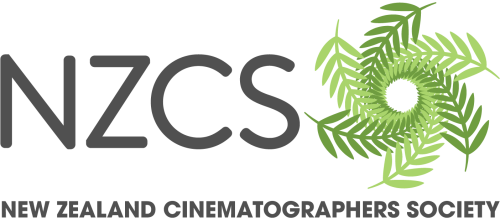|
Review: HDR Masterclass, Saturday Dec 7th, 2019 with Ben Allan ACS, CSI

Viewing test results in theatre at Dept of Post. Photo credit: Jess Charlton
After many months planning a strategy for our Masterclass program, the NZCS was pleased to facilitate an inaugural one-day session on HDR (High Dynamic Range) Grading, with guest cinematographer Ben Allan, ACS, CSI and colourist James Gardner from the Department of Post.
Despite a relatively short run-up time and a busy time of year, the attendance was robust at 20 – about the perfect size for the venues, and attendees comprised an interesting mix of cinematographers, colourists, post-production/editors, equipment suppliers, associate members and students.
It was a very inter-active morning session beginning with capturing Raw test footage on an ARRI Alexa in the Unitec film studio. Rather than shoot the standard test charts and static model, Ben devised a short drama scene where our model interacted in an existing set. Lighting suggestions were invited from our DP’s on the floor, so anyone had a chance to include an element that they wanted to see tested – ranging from over and underexposure areas, to the inclusion of various practical lighting sources like mobile phone and desk lamp, and a variety of colour hues. A Rosco Softdrop loaned by PLS was used outside the set window to simulate the Auckland cityscape.
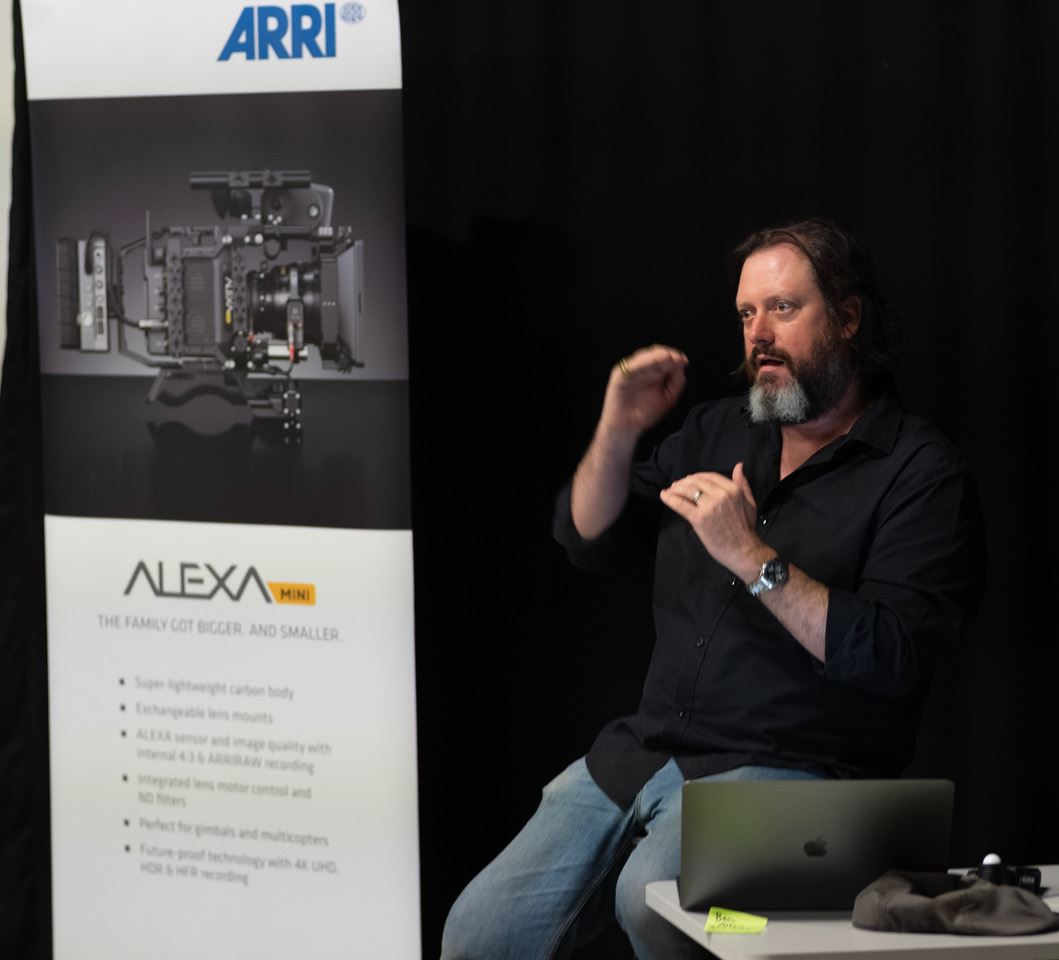
Ben Allan ACS CSI lectures on HDR. Photo credit: Jess Charlton
The afternoon session began at The Department of Post with a slideshow and introduction to the HDR process by Ben and James. This resulted in a very lively debate with many questions from the floor.
Viewing the mornings’ footage in the grading theatre on an SDR and HDR monitor side-by-side, with James Gardner at the helm was a very instructive and entertaining session, and Ben Allan got to explain in detail, how a much greater range of brightness and shadow detail was possible in the HDR version displayed on the HDR monitor.
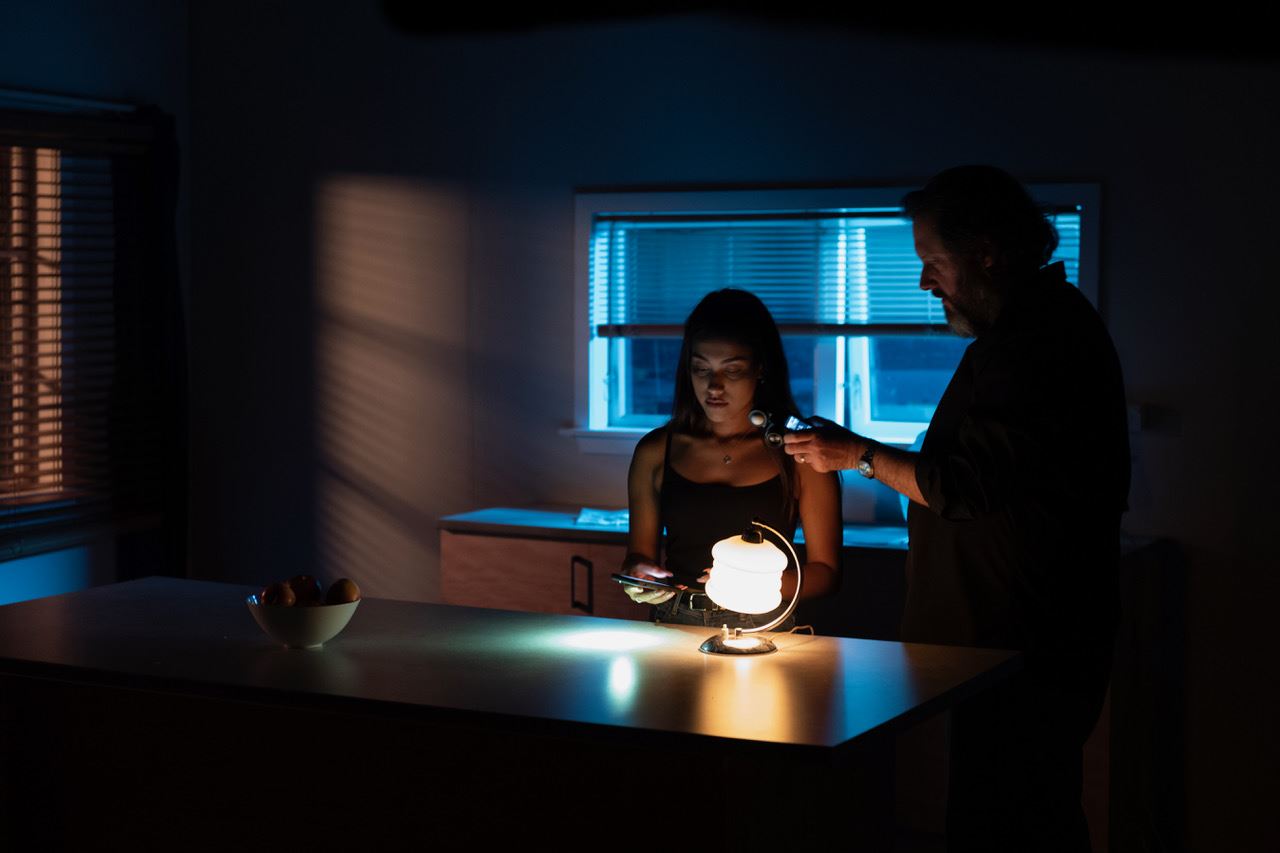
Ben Allan ACS CSI taking light readings in studio with model Jade Tannen
Maile Dougherty’s input as a post-production producer, recently working on the Netflix film “The King” in Sydney, also lent a most valuable perspective, and she had first-hand experience with some of the challenges of this relatively new technology.
The day concluded with socialising over refreshments, and the chance for participants to swap notes with old and new acquaintances.
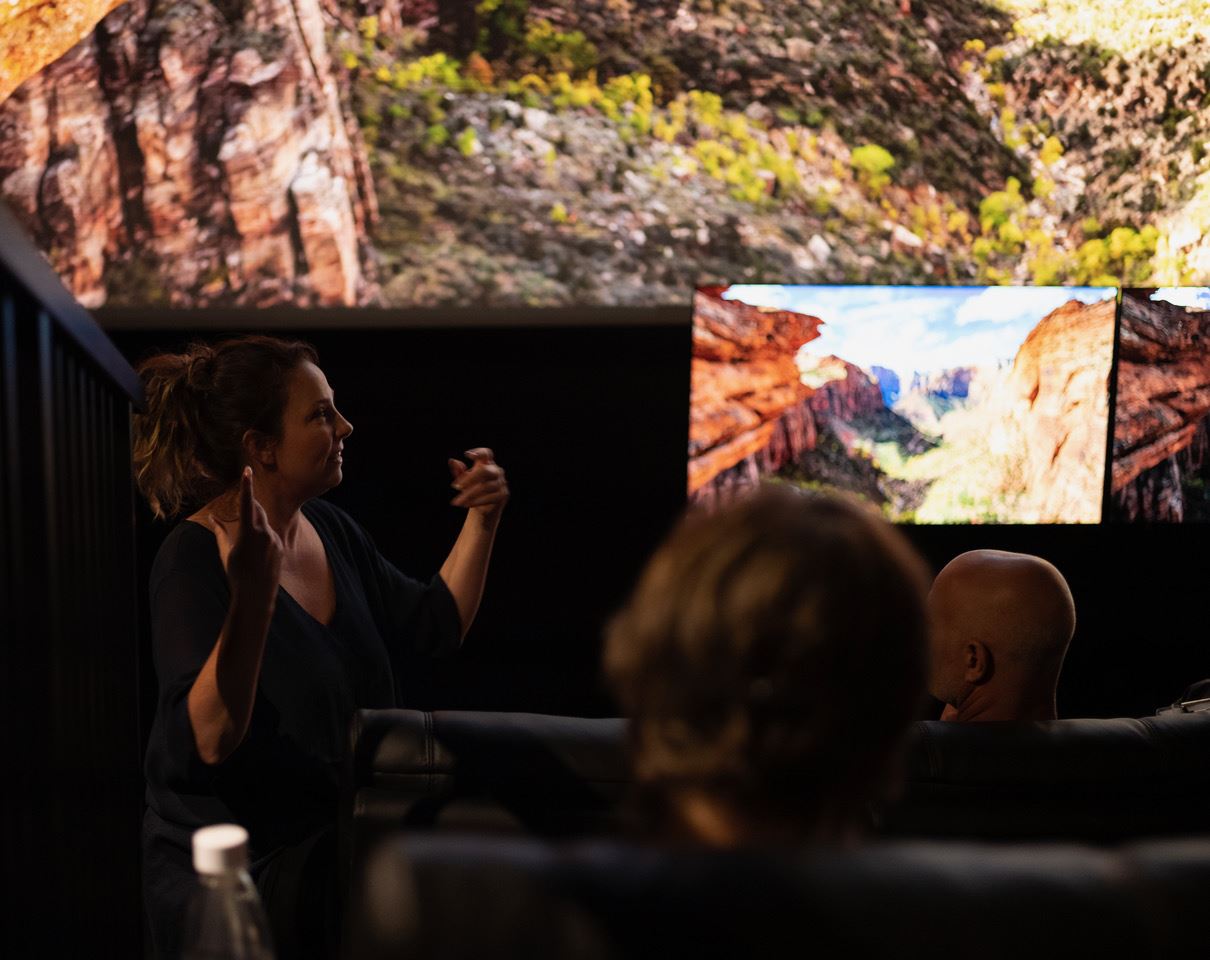 Maile Dougherty shares experience on "The King" . Photo credit: Jess Charlton
Maile Dougherty shares experience on "The King" . Photo credit: Jess Charlton
A summary of some of the basic lessons learned over the day:
-
HDR (High Dynamic Range Video) is a new post-production standard that accommodates an extended brightness range offered by a new generation of HDR-capable domestic TV’s and professional monitors.
- A very useful analogy for HDR video is to look at the audio world where advancements in the available dynamic range of sound signals (“from a whisper to a scream”) has been around for decades and illustrate where we are heading.
-
HDR video should not be confused with digital stills HDR (which refers to layered multiple images with different exposures) If you are shooting with a high end professional movie camera, you are probably already capturing HDR capable images.
-
Major international networks are now specifying delivery to HDR specs but there are at least four different standards in use, including Dolby Vision, HDR10, Technicolor HDR and HLG (for live broadcast applications)
-
The vast majority of viewers will still see your show in SDR (Standard Dynamic Range) so its very important to convince producers to budget in extra grading time for a “Trim Pass” to manually correct what will be automatically generated from the HDR master (and will not always be true to the original creative intentions)
- The brightness reflected from objects/screens/monitors etc. is measured in candelas per sq m otherwise know as “Nits” and one of the cinematographer’s most useful tools in the HDR world is a digital spot meter which can be used to record these values.
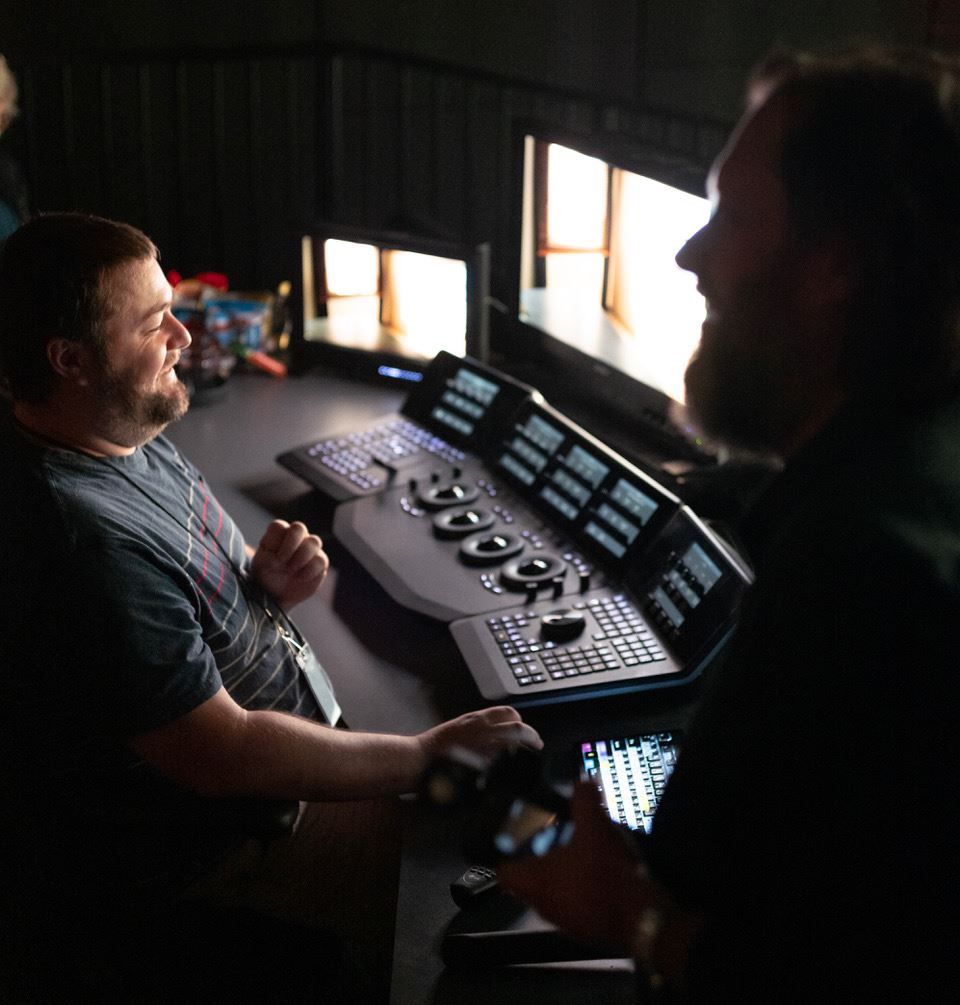 James Gardner at Dept of Post. Photo credit: Jess Charlton
James Gardner at Dept of Post. Photo credit: Jess Charlton
Feedback from some of the Masterclass participants:
“For me the biggest benefit was in being able to follow the whole process from lens to screen, and the input from the instructors as well as from the experienced professionals in the class was very valuable.”
“I’d been curious about the HDR process, and nits, amongst other aspects of the evolving technology involved with colour grading. Being able to sit in with a bunch of other curious members of our profession and get the low down with a variety of experts was very enlightening. I’m looking forward to the next masterclass. Pretty good value for money I reckon.”
“Great course, very well run - I walked away with a much better understanding of HDR . The price felt right too - very manageable, and everyone there was taking it seriously as only happens when you pay!“
“The one day format was excellent. It covered all the essentials a DP needs to be fluent in an HDR discussion with a producer and explained the tech very well”.
“I found it super interesting, was nice to have a course that was helpful in professional development & practical and not just a quick hands on look at new equipment”
“Interesting to see that HDR is not just "more" of what we already have, but a whole new can of worms”
“I finally got an understanding of what HDR is all about and where things are heading”
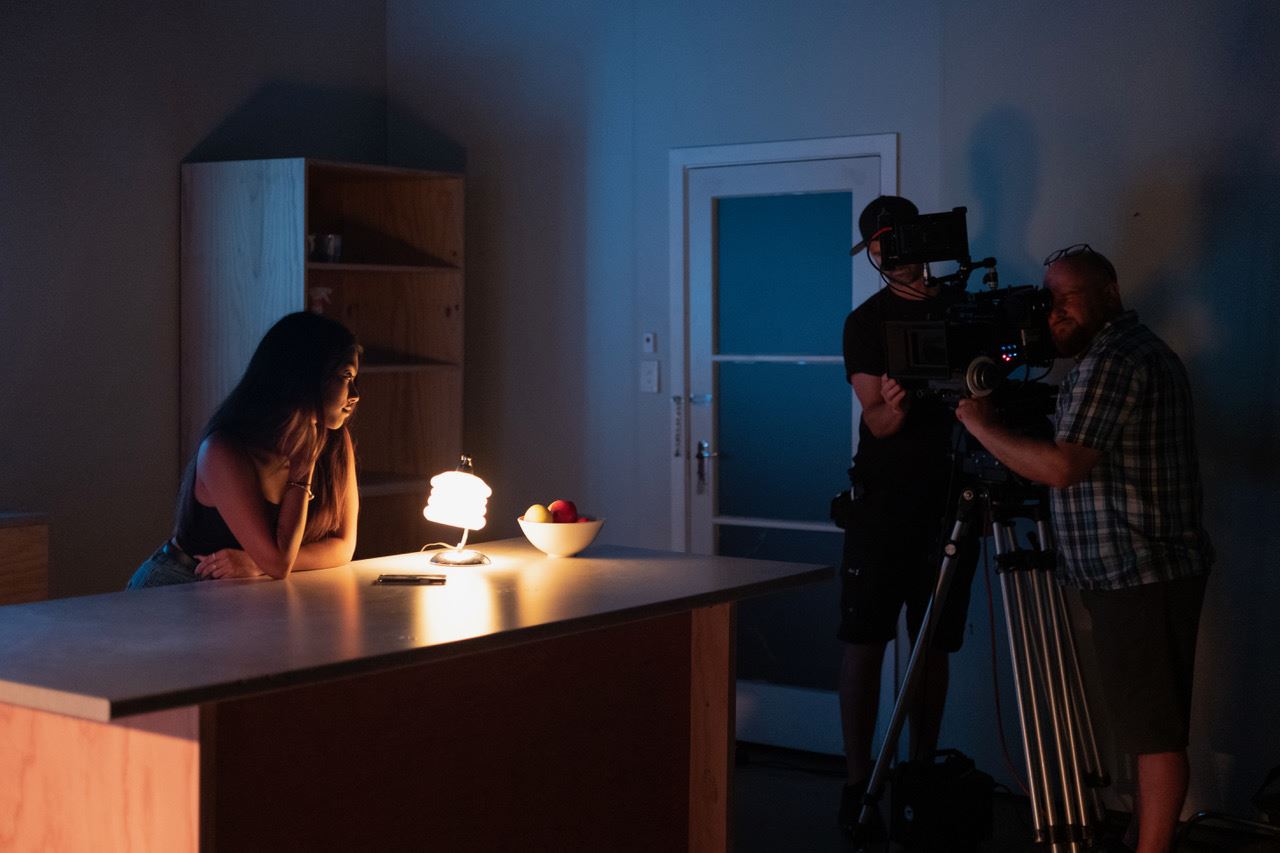 Camera crew shooting in Unitec studio. Photo credit: Jess Charlton
Camera crew shooting in Unitec studio. Photo credit: Jess Charlton
This Masterclass would not have been possible, without the generous help from the following sponsors in supplying equipment and resources:
- Metro Film for ARRI Alexa camera kit and Zeiss FF Supreme Prime lens set.
- ARRI Australia for contributing to travel and accomodation for Ben Allan ACS
- The Rebel Fleet for supplying DIT station and monitors
- Unitec Creative Industries for use of the studio
- Department of Post for supplying staff and facilities for the afternoon session
The NZCS plans to run a series of four masterclasses in 2020 and looks forward to collaborating with a variety of local sponsors. We will reboot another survey early next year to determine areas of majority interest for subsequent classes.
Thanks to the crew in the morning: 1st AC Ben Rowsell, 2nd AC Teresa Bradley, DIT Michael Urban, gaffer Adrian Greshoff, and model Jade Tannen.
Thanks to the following for helping publicise the event: Showtools, Film Crews, Crewlist, Directors and Editors Guild, Screen Guild and WIFT
~ Donny Duncan NZCS, Professional Development Manager
